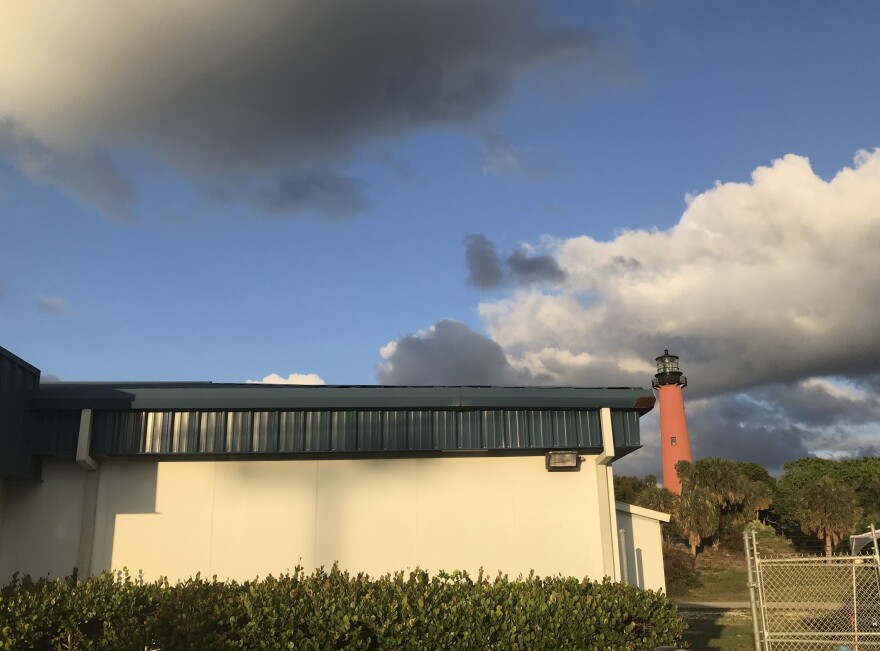People who live around the Jupiter Inlet Lighthouse don’t want to see it slip away – literally or figuratively.
The 120 acres surrounding the towering red landmark have been under the stewardship of the federal Bureau of Land Management, in conjunction with local groups and jurisdictions, since 2008. The BLM’s work on the site – fighting back nonnative weeds, laying out trails, shoring up shoreline – has been dictated by the same 10-year-plan since 2010.
As 2020 approaches, the agency is starting to plot out its next decade, and opened the process up for community input at a Wednesday night meeting.
Erosion was a top concern. The shoreline on the eastern edge of the dune has retreated an average seven feet per year over the last 10 years, up from a two-foot-per-year average in the preceding half-century.
Some of that naturally occurs over time, but much of the community concern around erosion Wednesday night coalesced around a familiar South Florida complaint: vacationers and weekenders wreaking havoc on the environment.
Wakes from boats traveling the Loxahatchee River do some damage, as do people climbing the dunes and digging sand caves. Residents of the area around the lighthouse also complained of beachgoers playing loud music and leaving behind trash.
Many people who showed up to the Wednesday meeting were frustrated by the BLM’s limited capacity to rein in disruptive behavior and the damage it can cause – though the agency does have its own law enforcement officers, there aren’t any stationed at the Jupiter site.
Some were also anxious that the site might lose its protective “National Conservation Lands” status or be cut down in size, like the Bears Ears National Monument was in 2017.
Leanna Landsmann, a board member for Sustainable Palm Beach County who attended the Wednesday meeting, said she walks the trails around the lighthouse several times a week. She said the lighthouse and the natural area around it serve as an important symbol for the local community, and need to be protected.
“You fly in and you see the lighthouse and you know you’re almost home,” she said. “It’s very special to Floridians and special to people who live in this area.”
Peter DeWitt, the BLM project manager for the site, said the agency’s mandate at the lighthouse area requires community involvement, so he hopes listening sessions can be held annually. In addition, he said they’ll distill community feedback into a proposal and bring it back out for more public critique before submitting it.
“It’ll be ‘We listened to you, this is our interpretation of what we heard and how the site should be managed for the next 10 to 15 years – tell us what you think, tell us what we got wrong, tell us what opportunities we’re missing,’” he said.

As the BLM looks to update its plan, it’s also contending with major changes to how the site has been used since 2010. In 2013, the Coast Guard moved out of 11 two- and three-bedroom houses built for members working at the lighthouse and a nearby station. Just this month, it vacated the Coast Guard Exchange, or PX.
Some of the houses are still used for BLM office space, and to house workers or the occasional visiting Scouts troop. The Loxahatchee River Historical Society, which runs tours of the lighthouse and has a small museum on the premises, is looking at building an expanded museum on the site of the PX – and may use the existing building as a temporary space for exhibits. The BLM is hoping to codify plans for the rest of the unused space into the next plan.
Jamie Stuve, the historical society’s president, helped bring the BLM to the Jupiter Inlet Lighthouse to set up its “National Conservation Lands” designation in 2008. She said a key concern is protecting the existing historical structures and features of the site, and potentially adding to them – the historical society has hopes for a replica of the U.S. Weather Bureau Office that was set up near the lighthouse before moving to Miami.
“There’s so much history in the ground there,” she said of the lighthouse area.


